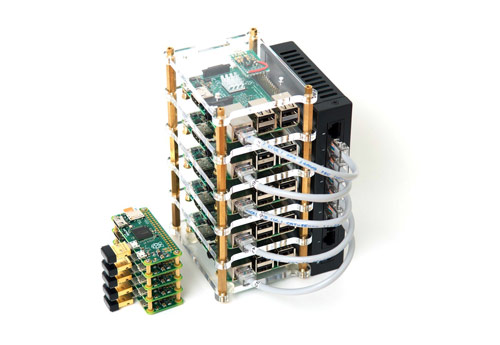
Version 0.9.3 of the Dramble—running Drupal 8 on 6 Raspberry Pis
I've been tinkering with computers since I was a kid, but in the past ten or so years, mainstream computing has become more and more locked down, enclosed, lightweight, and, well, polished. I even wrote a blog post about how, nowadays, most computers are amazing. Long gone are the days when I had to worry about line voltage, IRQ settings, diagnosing bad capacitors, and replacing 40-pin cables that went bad!
But I'm always tempted back into my earlier years of more hardware-oriented hacking when I pull out one of my Raspberry Pi B+/A+ or Arduino Unos. These devices are as raw of modern computers as you can get—requiring you to actual touch the silicone chips and pins to be able to even use the devices. I've been building a temperature monitoring network that's based around a Node.js/Express app using Pis and Arduinos placed around my house. I've also been working a lot lately on a project that incorporates three of my current favorite technologies: The Raspberry Pi 2 model B (just announced earlier this month), Ansible, and Drupal!
In short, I'm building a cluster of Raspberry Pis, and designating it a 'Dramble'—a 'bramble' of Raspberry Pis running Drupal 8.






